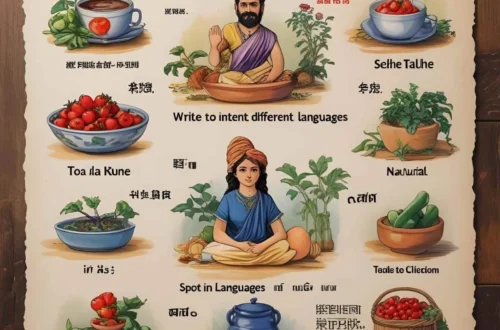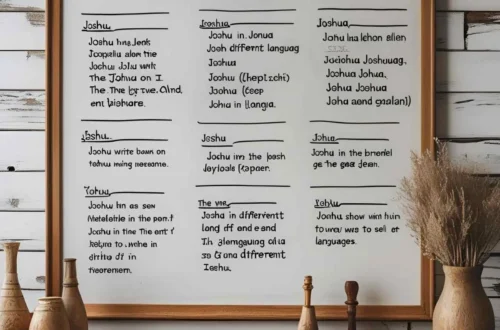Picture stepping off a plane in Rio de Janeiro, greeted by a vibrant “bem-vindo” from a smiling local. That single word, “welcome,” instantly makes you feel at home, no matter where you are. Across the globe, the term for “welcome” carries a universal promise of warmth and inclusion, yet each culture adds its own unique touch.
For example, whether it’s a heartfelt “swagatam” in a bustling Delhi street or a melodic “aloha” on a Hawaiian beach, this word reflects humanity’s shared desire to embrace others.
Let’s embark on a journey to discover how people say “welcome” in different languages and what these expressions reveal about their cultures.
Reference Table: “Welcome” in Different Languages
| Language | Word/Phrase | Cultural/Linguistic Insight |
|---|---|---|
| French | Bienvenue | Means “well arrived,” used in warm greetings. |
| Spanish | Bienvenido | Literally “well come,” common in Spain and Latin America. |
| Italian | Benvenuto | Suggests “good arrival,” reflecting hospitality. |
| German | Willkommen | A direct, warm invitation, widely used in Germany. |
| Mandarin | Huānyíng (欢迎) | Means “to greet with joy,” emphasizing enthusiasm. |
| Hindi | Swagatam | Derived from “swagat” (reception), a heartfelt welcome. |
| Japanese | Yōkoso (ようこそ) | Means “please come,” a polite invitation in Japan. |
| Korean | Hwan-yeong (환영) | Means “greeting,” used with warmth in South Korea. |
| Arabic | Marhaban (مرحبا) | Means “hello” or “welcome,” used across 20+ countries. |
| Swahili | Karibu | Means “come near,” inviting closeness in East Africa. |
| Zulu | Wamukelekile | Means “you are received,” a warm South African greeting. |
| Yoruba | Káàbọ̀ | Means “come in,” reflecting Nigerian hospitality. |
| Maori | Haere mai | Literally “come here,” a warm Maori invitation. |
| Hawaiian | Aloha | A versatile term for love and welcome, tied to island spirit. |
| Cherokee | Donadagohvi | Means “let’s meet,” a communal greeting in Native American culture. |
European Languages: Warm Invitations with Tradition
European languages express “welcome” with terms that blend warmth and cultural roots. For instance, in French, “bienvenue” (well arrived) is used in Paris cafés or formal events, reflecting France’s love for gracious hospitality. Meanwhile, Spanish speakers say “bienvenido” (well come), a term heard across Spain and Latin America, often paired with a smile or embrace. Additionally, Italian uses “benvenuto” (good arrival), evoking Italy’s tradition of making guests feel like family. In German, “willkommen” is a direct, heartfelt invitation, used in Germany’s beer halls or homes to signal openness. Thus, these terms reflect Europe’s blend of formal and heartfelt hospitality, from poetic French to communal German greetings.
Asian Languages: Joyful and Polite Greetings
Asia’s diverse languages offer unique ways to say “welcome,” often tied to joy and respect. For example, in Mandarin, “huānyíng” (to greet with joy) conveys enthusiasm, used in China to make guests feel special. In Hindi, “swagatam” (reception) is a warm, formal greeting, often heard in India’s colorful festivals or homes. Similarly, Japanese uses “yōkoso” (please come), a polite invitation reflecting Japan’s culture of respect, often seen at airports or events. In Korean, “hwan-yeong” (greeting) carries a warm tone, aligning with South Korea’s emphasis on heartfelt connections. Finally, Arabic’s “marhaban,” used in over 20 countries like Egypt and the UAE, is a versatile welcome, rooted in the region’s tradition of generous hospitality. These terms highlight Asia’s range, from joyful Chinese greetings to respectful Japanese invitations.
African Languages: Welcomes Rooted in Community
In African languages, “welcome” emphasizes closeness and community. For instance, Swahili, spoken in over 20 countries like Kenya and Tanzania, uses “karibu” (come near), inviting guests into the heart of a gathering. In Zulu, “wamukelekile” (you are received) is a warm South African greeting, often shared with a handshake or smile. Similarly, Yoruba’s “káàbọ̀” (come in) in Nigeria reflects a culture of open doors and communal joy. These terms, used in vibrant markets or family events, underscore Africa’s focus on togetherness and warmth, making every guest feel part of the community.
Indigenous & Island Languages: Invitations with Heart
Indigenous and island languages express “welcome” with simplicity and connection. For example, Maori in New Zealand uses “haere mai” (come here), a warm invitation often paired with a hongi (nose press) in ceremonies. In Hawaiian, “aloha” is a versatile term for love and welcome, embodying the island’s spirit of openness. Similarly, Cherokee’s “donadagohvi” (let’s meet) is a communal greeting, used in Native American communities to foster connection. In Samoan, “talofa” (hello or welcome) reflects the Pacific’s communal warmth, often used in group settings. Across these cultures, from New Zealand to the Cherokee Nation, “welcome” emphasizes unity and heartfelt inclusion.
Cultural Insights: The Evolution of Hospitality
Words for “welcome” have evolved with cultural values of hospitality. For instance, the Arabic “marhaban” traces back to ancient trade routes, symbolizing openness to travelers. In Europe, terms like “bienvenue” and “benvenuto” emerged from medieval traditions of hosting pilgrims. Moreover, in African languages like Swahili, “karibu” reflects historical trade networks, inviting connection. In Asia, terms like “yōkoso” and “huānyíng” align with philosophies of respect and joy, shaped by centuries of cultural exchange. These words carry histories of travel, trade, and community, uniting people through the universal act of welcoming.
Proverbs and Sayings: Wisdom of Hospitality
- French: “Un hôte bienvenu rend la maison joyeuse.” (A welcomed guest makes the house joyful.) – Ties hospitality to happiness.
- Hindi: “Atithi devo bhava.” (The guest is like a god.) – Reflects India’s reverence for guests.
- Swahili: “Karibu nyumbani, ni kama familia.” (Welcome home, you’re like family.) – Emphasizes communal bonds.
- Japanese: “Yōkoso, kokoro ga hiraku.” (Welcome, the heart opens.) – Highlights emotional connection.
- Yoruba: “Káàbọ̀, ayọ wa ninu ile.” (Come in, joy enters the house.) – Links welcome to joy.
FAQs
Why do some words for “welcome” sound similar?
Shared linguistic roots (e.g., Romance languages like French and Spanish) and cultural exchanges (e.g., Arabic’s influence on Swahili) create similarities.
What’s the oldest term for “welcome”?
Arabic’s “marhaban,” used since ancient trade eras (circa 7th century), is among the earliest recorded greetings.
How do cultures shape the term’s use?
Collectivist cultures (e.g., African, Indigenous) use “welcome” to build community, while individualistic cultures (e.g., European) focus on personal hospitality.
Conclusion
From “bienvenido” in Spain to “karibu” in Tanzania, the word for “welcome” weaves a global thread of warmth and inclusion. Each term, whether the joyful “huānyíng” in Mandarin or the heartfelt “haere mai” in Maori, reflects cultural values while celebrating our shared desire to connect. Consequently, these words remind us that a simple greeting can open doors, uniting all people in a universal embrace. How do you say “welcome” in your language, and what does it mean to you? Share your stories below—we’re excited to hear your voice!






